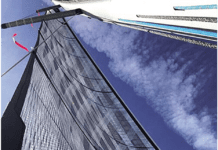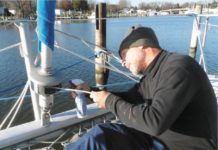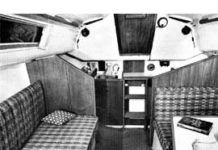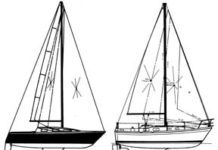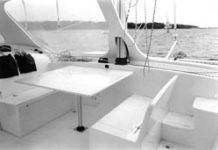C&C 27
This fast and handsome racer/cruiser from the 1970s is an excellent example of what made C&C Yachts such a successful company.
Buccaneer 295 and 305
From powerboat builder Bayliner, these two boats are very different in design and very similar in construction. The 295 is an outdated IOR design and the 305 a high-sided, shoal draft cruiser that makes too much leeway.
Pearson 26
A 1970's racer/cruiser that makes a fine, economical boat despite a few problems.
Corsair F-24 MK II
This little sister to the F-27 folding trimaran is flat out fast and well built, but compared to a monohull (and you’ve heard this before), expensive and cramped down below.
Maine Cat 30
This cruising catamaran features open living on the bridge deck, above average performance and low maintenance.
Ranger 26
This late 60’s/early 70’s IOR and MORC racer/cruiser was a hot boat in its day, and it still acquits itself reasonably well. But lightweight construction limits the 26’s suitability for offshore.
Albin Vega
Like a lot of people, our first recollection of the Albin Vega was an advertisement in the sailing magazines. In the early 1970s, a time when California production coastal cruisers dominated the American market, this little Swedish import was hyped as a serious offshore cruiser.
Alerion-Express
The Sanford Boat Co. launched its first Alerion in 1978 and eventually built 20. Edward Sanford says there are still several around, and owners have included such notables as America's Cup winner Bill Koch and singer Jimmy Buffet. In the late 1980s Ralph Schacter commissioned West Coast naval architect Carl Schumacher to draw a boat that combined traditional appearance with modern materials and contemporary "go-fast" thinking. The result brought so many comments and inquiries that Schacter joined with Holby Marine of Bristol, Rhode Island, to build the boat on a production basis.
Alberg 30
The Alberg 30 is an adaptation of a 30-footer Alberg designed for San Francisco Bay and was first built in response to a request by some Toronto sailors for a cruising auxiliary that could be fleet raced. By the time the first boat was built, a large group of Chesapeake Bay sailors had also commissioned a fleet. Today those two areas are still the hotbeds of Alberg 30 ownership with more than 100 boats represented in the Toronto association, almost 200 in the highly active and enthusiastic Chesapeake Bay association.
Bristol 27
The Bristol 27 is a product of its era and of the traditional bent of designer Carl Alberg's thinking--that is, a combination cruiser and club racer. At 6,600 pounds displacement with 2,575 pounds of internal lead ballast in its full keel, the boat is fairly heavy by contemporary standards.













